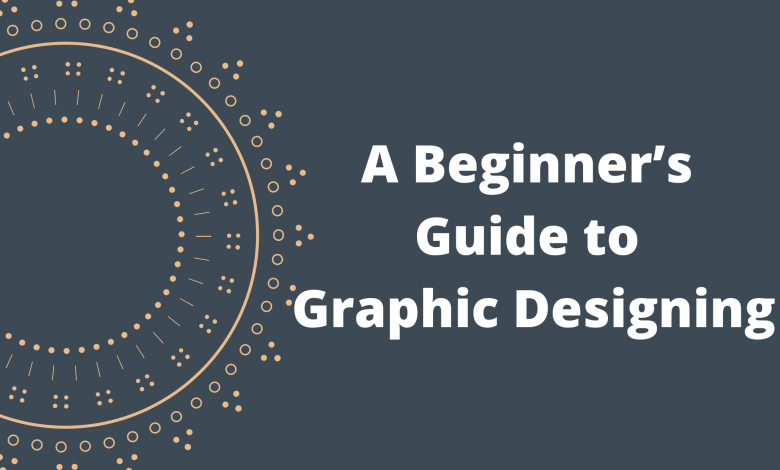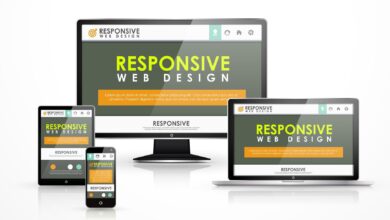A Beginner’s Guide to Graphic Designing

Designing something gives a creative appearance which is important because it acts as a magnetic force to attract people and powerfully conveys your brand value.
A basic and plain logo gives a dull and boring appearance, but creatively built logos are attractive and pleasing. So, a logo design agency or other design agency’s primary purpose is to create a logo pretty looking! Thus, designing something is essential especially, marketing tools.
So, a graphic designer’s key function is to convey a message visually and creatively.
A beginner (like you) who has zero knowledge of graphic designing is at the right place to learn the basics of designing. This article will guide you thoroughly!
You Should Know History!
Don’t be afraid. I am not asking you to learn world history. Instead, you should read the graphic designing history because it will broaden your thinking horizon, and you’ll learn old styles and ways of designing, which you can incorporate into your designing style.
But do not forget to learn the new modern and trending designing styles.
Studying history will diversify your knowledge and enrich you with skills.
So, how are you going to read the graphic designing history? You can watch documentaries, hear podcasts, or you can read books.
You can find books from Google Books, Goodreads, Amazon, etc.
Master the Principles of Designing
There are five key principles of designing that a beginner should know. These are not only for beginners. Even professionals follow the following principles.
Alignment –
It is the arrangement of the design to show a unified and simplified look. The alignment helps our eyes to read anything in order.
When something is unaligned or is blending with the background, it creates confusion. You don’t know where to look, and that is why aligning things in order is essential.
Alignment avoids the messiness in your work and creates a connection between the elements.
A professional designer of a logo design agency gives a lot of importance to this designing principle. Without alignment, the logo designer cannot make a symmetrical logo (see McDonald’s logo).
Repetition –
Repetition shows a consistent look at your work product. This ultimately creates association and familiarity.
It helps create a pattern to your design, which eventually helps the reader memorize and identify your pattern. In other words, we can say that it allows the brand to create an identity.
Lay’s potato chips have many flavors. Every lay packet has the exact position of the logo, same font, but the difference is in colors and the illustrations. Still, we easily recognize the brand by looking at the single package. But how? Because the packaging has the same pattern and design, which shows that they are products of the same family (company).
Contrast –
It’s used to show emphasis. It “pops up” any information that you want to show in your work. So, it will be easier for a reader to find the crucial information easily.
Contrast happens when components are in opposition like thick and thin, small and big, black and white etc.
This opposition gives a designer in highlighting the main info by making it more evident and clearer.
The contrast plays an important role in logo designing. Graphic designers, especially those associated with a logo design agency, use this designing principle to make a bold and eye-catching logo.
Hierarchy –
In the hierarchy, we rank things based on their importance.
In designing, we divide the hierarchy into five parts: headline, image, subheading, call to action, and body copy. This dividing shows the priority of information.
It is in designers’ control to use any size, color, contrast, etc., but remember the most crucial info mostly made of large fonts to have a stand-out property.
Balance –
Give steadiness and stability to a design.
It is easy to create a symmetrical balance in the design. You only have to divide the paper into two halves and then add the things on both halves equally.
This symmetrical balance gives a pleasant and old-style look. But sometimes this look gives a dull appearance.
The asymmetrical balance has unequal visual weightage on each side, but the unequal images look balanced in appearance. This asymmetrical balance gives a creative and artistic impression.
A professional designer or a logo design agency achieves balance in a logo in many ways by changing the size of typography, changing the color, or adding or removing shapes to create a balance in the logo.
Be Familiar with the Designing Terminology
A non-graphic designer or a beginner will not know kerning, golden ratio, hierarchy, rules of third, leading, x-height, tracking and many other terminologies.
You should know what these terminologies are and how they work.
When the different graphic designers converse in front of you, you’ll quickly understand the designing language and positively portray your reputation.
Master Designing Applications
Designing applications are an essential ingredient to be a professional designer. The apps include Adobe Photoshop, Adobe Illustrator, Adobe InDesign and sketch.
A logo design agency or other designing agency also uses this software.
A beginner like you should use and learn the tools in these apps because they will help you tackle your client’s needs.
Get Inspiration
Numerous famous designers upload their works on social media, write blogs, create websites to give free tutorials, and write books. Through these resources, you will learn about different styles, and you’ll find various people who’ll become your inspiration. Moreover, their inspiration will give you possibilities and opportunities in the future.
In the long run, you’ll find your signature style too that will resonate with you. However, it is not easy to find your styles. You need to spend time and effort to achieve something.




